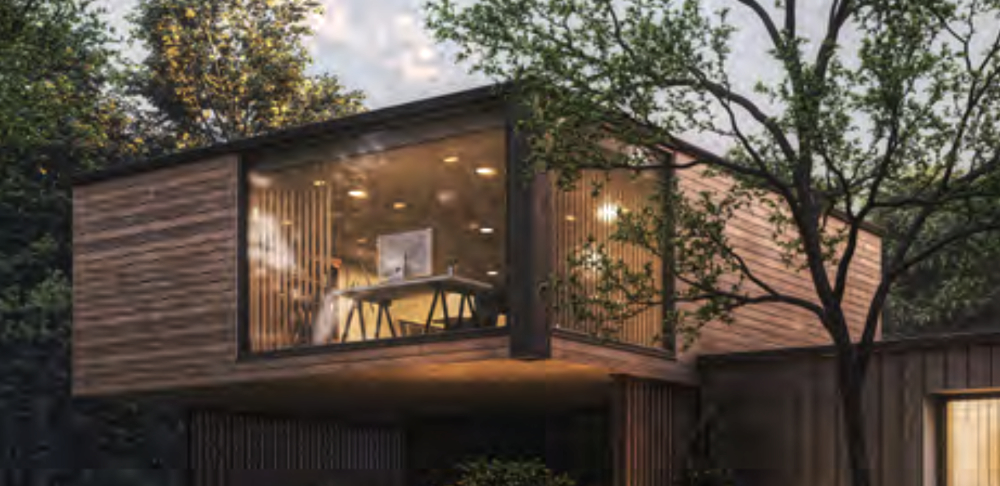Flat roof designs versus pitched roof designs
[edit] Why flat roofs sometimes have the edge over pitched roof design
In residential or commercial environments, properties are generally covered with a pitched or flat roof design. Although different in style, both are designed to carry out the same task: safeguarding a building against the elements whilst contributing to the creation of a warm, thermally efficient interior. But why do some property owners opt for a flat roof rather than a pitched roof design or pitched roof extension?
Firstly, the title ‘flat roof’ is slightly misleading. No roof is completely flat, as each one must contain a slope, however slight, to allow effective rainwater run-off. If water is not properly dispersed from a flat roof, its weight will lead to deflections forming and increase the risk of ponding. This additional weight may increase the likelihood of a worst- case scenario: water-based structural damage, which is one of the most common forms of building failure.
[edit] Advantages of a flat roof over a pitched roof design
Although suitable for a range of environments and applications, flat roofs have greater prominence on commercial or publicly funded buildings including schools and hospitals. In these areas, the advantages of a flat roof over a pitched roof design are more pronounced for several reasons. Commercial roofing spaces tend to be much larger than residential settings and contain multiple levels, eliminating a sloped or pitched roof design as an option. Bearing less weight than a pitched roof design or pitched roof extension, a flat roof is more suitable for the safe, convenient placement of air conditioning units and other plant materials that are crucial to high-occupancy buildings. The ease with which flat roofs are accessed and upkept in comparison to pitched roof designs or pitched roof extensions is enhanced by their ability to accommodate edge protection and ladder systems. This reduces the safety risk during routine maintenance visits.
[edit] Pitched roof construction details
A roof’s pitch is measured by the vertical rise in relation to horizontal run. There are two types of pitches: steep and shallow. A steep slope is between 45 and 60 degrees, while a shallow pitched roof design is between 20 and 45 degrees. The steepness or depth of a roof’s slope affects how much water will run off it, so it is important for homeowners to know their roof’s roof pitch.
[edit] Pitched roof verses flat roof
Pitched roofs, due to their height and visibility, are more of a striking statement in terms of aesthetics. However, flat roofs, on account of their rapid, cost-effective installation, easier maintenance and proven, long-term performance, find greater favour in commercial settings than a pitched roof design. That is not to say flat roofs can’t look as smart as they perform. Such are the advances in the technical composition of roof insulation and waterproofing membranes that flat roofs can provide a building with a crisp, uniform finish that obscures less eye-catching details, such as solar PV panels and plant details, from being visible at ground level.
Flat roofs are typically more cost-effective to install than a pitched roof design or pitched roof extension. This cost-efficiency is enhanced by flat roofs requiring less maintenance to uphold performance, although twice a year inspection is still needed. A pitched roof design or extension might be considered more suitable for areas subject to heavy snowfall or rain due to their greater pitch allowing faster shedding of water.
[edit] Tapered insulation: a facilitator to successful flat roof installation
Tapered insulation is an effective way of creating falls to provide effective water run-off. It is an increasingly popular method of keeping a flat roof dry and warm and securing its long-term performance. Achieving such an outcome requires good planning and specification, all of which can be dealt with by experts in flat roof and tapered roof insulation.
This article appears in the AT journal issue 150, winter 2024 as 'Why flat roofs sometimes have the edge over pitched roof design' written by James Wilkinson, Design Team Manager, Gradient.
--CIAT
[edit] Related articles on Designing Buildings
Featured articles and news
Amendment to the GB Energy Bill welcomed by ECA
Move prevents nationally-owned energy company from investing in solar panels produced by modern slavery.
Gregor Harvie argues that AI is state-sanctioned theft of IP.
Heat pumps, vehicle chargers and heating appliances must be sold with smart functionality.
Experimental AI housing target help for councils
Experimental AI could help councils meet housing targets by digitising records.
New-style degrees set for reformed ARB accreditation
Following the ARB Tomorrow's Architects competency outcomes for Architects.
BSRIA Occupant Wellbeing survey BOW
Occupant satisfaction and wellbeing tool inc. physical environment, indoor facilities, functionality and accessibility.
Preserving, waterproofing and decorating buildings.
Many resources for visitors aswell as new features for members.
Using technology to empower communities
The Community data platform; capturing the DNA of a place and fostering participation, for better design.
Heat pump and wind turbine sound calculations for PDRs
MCS publish updated sound calculation standards for permitted development installations.
Homes England creates largest housing-led site in the North
Successful, 34 hectare land acquisition with the residential allocation now completed.
Scottish apprenticeship training proposals
General support although better accountability and transparency is sought.
The history of building regulations
A story of belated action in response to crisis.
Moisture, fire safety and emerging trends in living walls
How wet is your wall?
Current policy explained and newly published consultation by the UK and Welsh Governments.
British architecture 1919–39. Book review.
Conservation of listed prefabs in Moseley.
Energy industry calls for urgent reform.


























